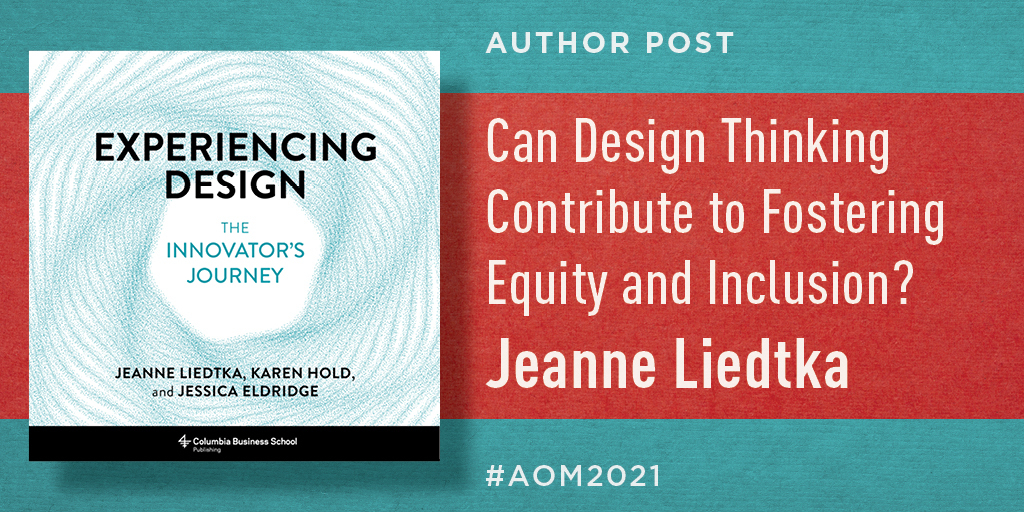Can Design Thinking Contribute to Fostering Equity and Inclusion?
By Jeanne Liedtka

The quest for a way to actually live and teach the principles of inclusion and equality, at schools, at work, and at home, has taken on a new urgency today. Debates on the relative merits of various approaches have ensued, with both faculty and practitioners seeking new and more effective ways to build awareness, empathy, and equitable decision-making capabilities.
Yet we have a time-tested set of tools and approaches, already in use in many schools and organizations, that could go a long way toward creating a new kind of more inclusive conversation: Design Thinking.
Design Thinking (DT) has traditionally been used to foster new product development and customer focus in organizations, but it is not hard to see why it ought to also provide a solid grounding for building skills around equity and inclusion. Its fundamental values—respecting the uniqueness of each individual, empathizing with their experiences, mitigating the negative effects of power and hierarchy, encouraging small experiments that give more people the opportunity to act—all support creating more collaboration and inclusiveness.
It invites a diverse set of students and stakeholders to bring more of their authentic selves into a conversation…
But DT contributes more than just values. Its focus on research tools that emphasize immersion in the experience of others develops perspective-taking abilities that are crucial to escaping our own ego-induced biases and appreciating difference in a meaningful way. Its approach to making sense of what we observe teaches us to recognize the emotional dimension of life as well as the “rational.” It offers mechanisms for building action-oriented communities aligned around both a shared view of current reality and an image of the future they aspire to. It invites a diverse set of students and stakeholders to bring more of their authentic selves into a conversation, in order to see together what none could see alone; then it helps them make their common vision tangible and shareable with others. In doing this, it successfully incorporates local voices, shifting decision making away from the unilateral voices of authority and hierarchy.
Experiencing Design: The Innovator’s Journey captures ten decades of research at the University of Virginia’s Darden School of Business to illustrate that the use of DT not only changes what those who study it produce, it also changes who they are in fundamental ways, encouraging them to become more empathetic, emotionally engaged, collaborative, and adaptive.
The powerful message here is that in doing all of this, it can be a positive force for both the greater good and the bottom line, helping students to learn new skills and organization members to better serve their customers, by laying a foundation for a more equitable and human-centered conversation in the process.
The social technology that Design Thinking introduces fosters the ability to communicate, learn, and co-create across difference by shifting the conversation in ways that invite the individuals involved to bring a more authentic, more human-centered version of themselves to work. While it makes no claim to solve the serious challenges that surround creating more equitable and inclusive organizations, it does provide a new and highly teachable—and actionable—toolkit and methodology.
Jeanne Liedtka is a faculty member at the Darden Graduate School of Business Administration at the University of Virginia. She is the coauthor of Experiencing Design: The Innovator’s Journey.


